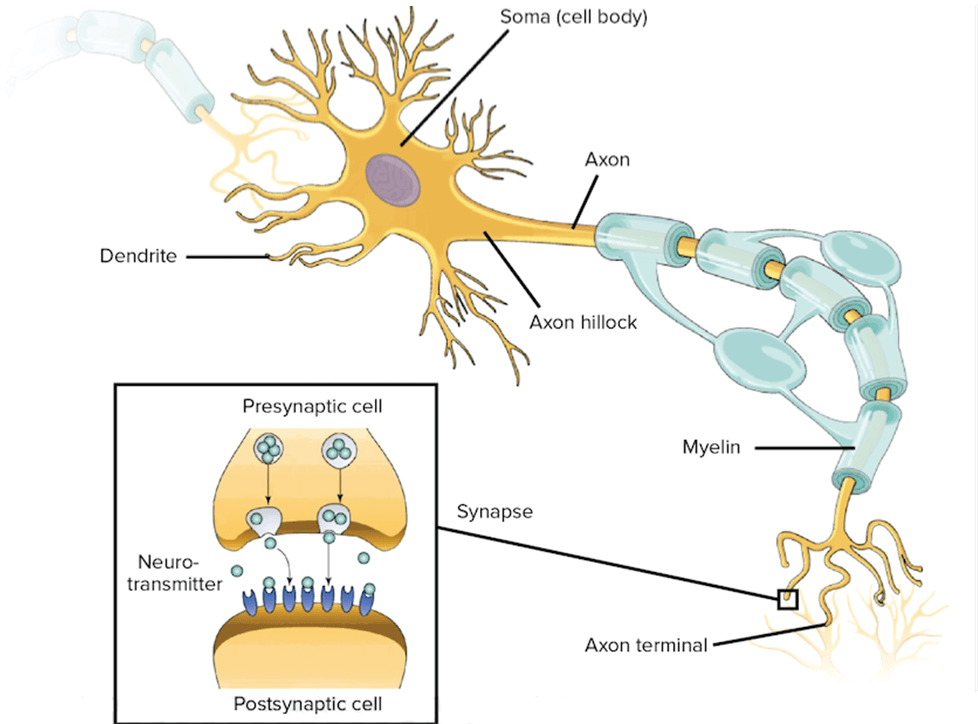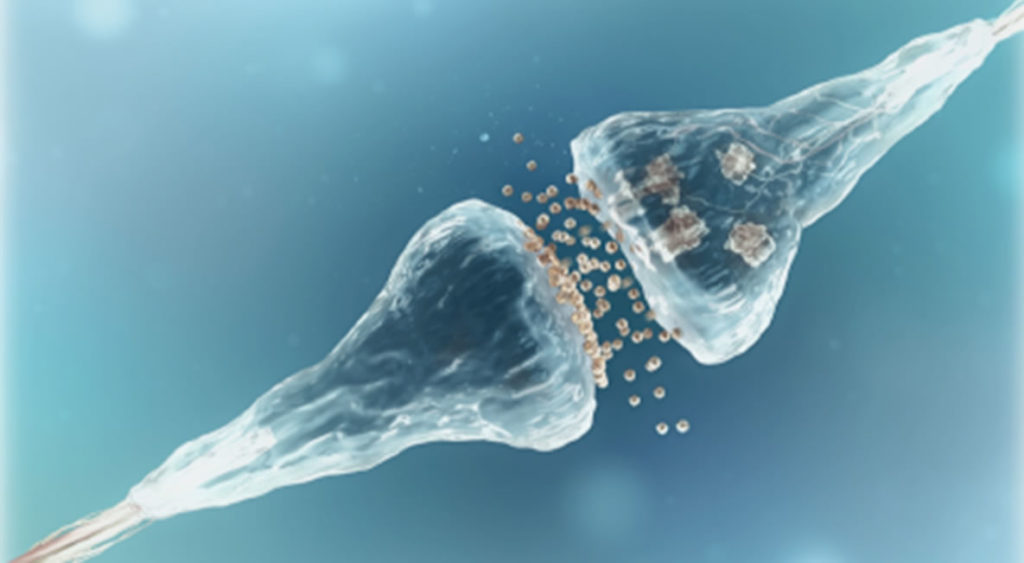Neurotransmission (also called “synaptic transmission”) is the process by which signaling molecules called “neurotransmitters” are released by a brain neuron to stimulate/cause the transfer of a message (action potential) via an electrical charge to another connected neuron, then on to another neuron, and another, and so on, until the message reaches its intended destination. These transmissions (synaptic firings) happen at incredible speed, even as we sleep. It is through this ongoing process of neuron firing that the brain communicates and the body functions. Without neurotransmission, the brain could not function, and human life could not exist. If neurotransmission is compromised through injury or disease, brain function and the quality of life can be greatly diminished.
Neurotransmission is both an electrical and chemical process. Though acting in concert, these processes are distinctly different, and occur by separately unique means and at different synaptic locations (junctures) of neurons.
Electrical neurotransmission occurs at electrical synapse locations where two neurons are physically connected to one another through gap junctures. Gap junctures permit changes in the electrical properties (polarization status) of one neuron to affect the other, and vice versa, so the two neurons essentially behave as one. When this “oneness” (polarization equilibrium) occurs, the electrical impulse needed for message transfer in one neuron can then be passed on to another neuron.


Chemical neurotransmission occurs at separate chemical synapse locations between neuron. At these locations, the neurons are not actually physically connected to each other. Rather, in between each neuron is a minute space called the “synaptic cleft.” The synaptic cleft is filled with extracellular fluid (the fluid bathing all the cells in the brain) through which the electrical impulse carrying the message passes on its way to the next neuron.
This infinitesimal space is 50,000 times thinner than a piece of paper (about a billionth of a meter). Maintaining balanced chemistry (homeostasis) inside these tiny spaces throughout the brain is critical to overall brain health and proper neurotransmission.
Medical science does not know the precise number of neurotransmitters in the brain, but more than 100 have been identified. Some of the more abundant and that have a great impact on the brain and body are:
- Acetylcholine causes the contraction of muscles, activates pain receptors, controls many stages of sleep especially REM sleep stage, acts a vasodilator and increases sweating and all body secretions.
- Norepinephrine controls attentiveness, emotional IQ, regulates dreaming and learning, involved in the “fight or flight” response, and affects heart rate and blood glucose levels.
- Dopamine is involved in the brain’s ‘’reward center,” has control over movements of the body that are involved in muscle coordination, arousal, positive and negative reinforcement, motivation and sexual gratification.
- GABA inhibits the transmission of nerve impulses which reduces activity in the brain, helps relieve pain, and provides a feeling of relaxation. Raised levels of GABA can cause sleepiness. Lack of GABA results in loss of inhibition which can cause hyperactivity of neurons.
- Glutamate regulates learning and memory, helps in brain development, and provides energy to muscles during strenuous exercise. Glutamate is responsible for over 90% of synaptic firings.


